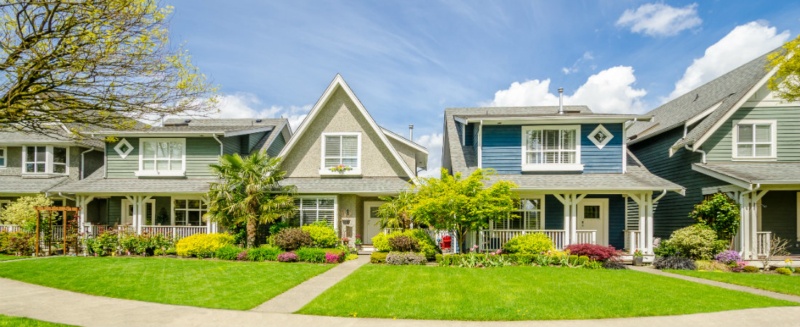How much home can you afford to buy? Not as much as last year, it turns out, as existing home sales fall due to affordability and lack of inventory.
The National Association of Realtors reported that existing home sales declined 3.7 percent in February to a seasonally adjusted rate of 5.48 million units. Economists polled by Reuters had forecast sales dropping 2.0 percent, but the decline was higher.
According to Realtor.com Senior Economist Joseph Kirchner, Ph.D., February existing home sales eliminates the growth in sales from January. That, he says, is “the bad news…The good news is that sales are up 5.4 percent from a year ago.”
Kirchner says the monthly decline is most pronounced in the Northeast, followed by the Midwest.
Why are home sales faltering? According to the National Association of Realtors (NAR), the main culprits for the reported drop are declining affordability and lack of inventory.
“There are plenty of buyers in the market, but they are unable to find the homes they want at the prices they can afford. These affordability challenges are the result of inventory shortages—which leads to bidding wars—and rising mortgage rates, resulting in higher monthly payments. We see the largest inventory shortages among the most affordable homes, which also saw the greatest decline in sales with homes under $100,000, down 15 percent from a year ago,” Kirchner said in a press release.
Lawrence Yun, the Realtors’ chief economist, says closings retreated in February as there were too few properties for sale and rising interest rates came together to weaken affordability conditions. That stifled buyers in most of the country.
“Realtors are reporting stronger foot traffic from a year ago, but low supply in the affordable price range continues to be the pest that’s pushing up price growth and pressuring the budgets of prospective buyers,” Yun explained. “Newly listed properties are being snatched up quickly so far this year and leaving behind minimal choices for buyers trying to reach the market.”
Added Yun, “A growing share of homeowners in NAR’s first quarter HOME survey said now is a good time to sell, but until an increase in listings actually occurs, home prices will continue to move hastily.”
The median existing-home price for all housing types in February was $228,400, up 7.7 percent from February 2016 ($212,100). February’s price increase was the fastest since last January (8.1 percent) and marks the 60th consecutive month of year-over-year gains.
The Realtors’ survey reported that total housing inventory at the end of February increased 4.2 percent to 1.75 million existing homes available for sale, but is still 6.4 percent lower than a year ago (1.87 million) and has fallen year-over-year for 21 straight months. Unsold inventory is at a 3.8-month supply at the current sales pace (3.5 months in January). A “normal” amount of housing inventory might be 6 to 12 months’ worth, say real estate industry observers.
When you don’t have enough homes for the number of buyers in the marketplace, it can create a fast-moving sellers’ market, in which prices rise quickly and bidding wars are common. Rising interest rates (the Federal Reserve recently raised the federal funds rate and mortgage interest rates are on the rise) further reduces affordability for home buyers at all price levels.
With interest rates expected to rise, affordability is expected to continue to decline.
Ilyce Glink is the Publisher of ThinkGlink.com. She is also the Founder and CEO of Best Money Moves.







When you say unsold inventory, does that include foreclosed properties bank pulled off the market because theycoulsn”the move them – there were just too.many and they’ll put them back on the market when inventory has.moved enoughto justify it.
Howard,
Foreclosures aren’t really the issue here. Unsold inventory is just the number of homes listed on the market right now and how long it would take to sell them. The number of foreclosures available is the lowest number in 9 or 10 years – which is good. But, no, I don’t think there’s a whole bunch of former foreclosures that are now being rented and may be dumped on the market at some point in time.
Thanks for your comment.
Ilyce